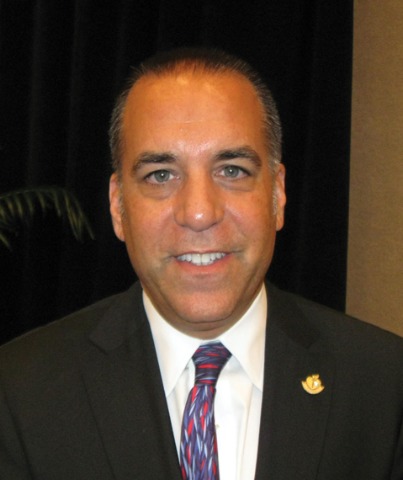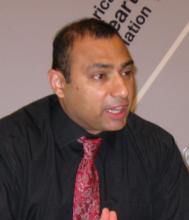LOS ANGELES – Physicians using angioplasty and stenting to treat intracranial stenosis need to identify the best patients to receive these interventions, and make sure that the procedures are cost effective, Dr. Adnan I. Qureshi said at the International Stroke Conference.
During 2005-2007, a large sample of U.S. hospital data showed that out of an estimated 1.8 million patients with acute or chronic intracranial arterial disease, roughly 1,600 patients underwent intracranial angioplasty or received a stent in an intracranial artery, said Dr. Qureshi, professor and associate head of the neurology department at the University of Minnesota, Minneapolis. The sample, which included diagnostic- and procedure-code information on nearly 371,000 U.S. patients with a primary diagnosis of stroke or transient ischemic attack, also showed that the small number of patients who underwent intracranial angioplasty or received a stent had substantially higher hospital charges than did medically treated patients.
Stenting also produced generally good outcomes, with 76% of patients going home after their hospital discharge, 20% going on to a care facility, and 4% dying in hospital. Patients who underwent intracranial angioplasty had worse outcomes, with a 17% mortality rate and a 39% rate of discharge to a care facility, with 45% going home from the hospital (total is 101% due to rounding).
But the administrative database that supplied these data included no information on patients’ disease severity, making meaningful outcome comparisons impossible, Dr. Qureshi stressed.
"The data do not allow us to compare patients with similar disease severity. Worse outcomes may not be related to the procedure but to where these patients started from. The challenge is to apply these treatments to the patients who are most likely to benefit," he said in an interview. Until now, "technology has been the main focus. Other factors that play into outcomes, like patient selection and timely administration of the treatment, have taken a back seat.
"We need to closely monitor the outcomes of patients who undergo [intracranial stenting and angioplasty] because that is the only way we’ll find out whether patients truly benefit. Endovascular treatments are being used today without good evidence of who to use them on and when. The message we don’t want to come from our analysis is that intracranial angioplasty and stent placement don’t work. What muddies the picture is when you apply [these treatments] to patients who don’t benefit. We need to focus on treating the patients who will benefit. I think our data are a wake-up call for us to be sure we are properly [focused] on patient selection and on cost being offset by the benefit that patients receive."
Dr. Qureshi’s analysis used data collected in the Nationwide Inpatient Sample by the Healthcare Cost and Utilization Project of the Agency for Healthcare Research and Quality. During 2005-2007, of the 370,993 patients in the sample with a primary diagnostic code of stroke or transient ischemic attack, 158 patients underwent intracranial angioplasty and 169 received an intracranial stent. Those numbers extrapolate to nationwide levels of about 1,822,000 cases, with 791 patients undergoing angioplasty and 837 receiving an intracranial stent, Dr. Qureshi said at the meeting, sponsored by the American Heart Association.
Further analysis showed that intracranial interventions occurred primarily at large teaching hospitals. Hospitalization charges for patients undergoing primary intracranial angioplasty only averaged $88,000; and for patients undergoing angioplasty plus stenting, the charges averaged almost $61,000. In contrast, for the remaining patients in the database hospitalization charges averaged about $24,000. Among patients who underwent an intracranial intervention, the concurrent presence of heart failure, pneumonia, urinary tract infection, or an intracranial hemorrhage was linked with a significantly increased rate of death or disability.
"In today’s world, most patients who get this procedure had an ischemic event in the brain related to the stenosis, and most had already been tried on maximal medical therapy. The challenge is, at what point do you decide that you have exhausted the medical options and move to [an intervention]. The strategy of how these patients are managed has changed, but their outcomes have not shifted as much as we would like. We need to closely monitor outcomes," Dr. Qureshi said.
Dr. Qureshi said that he had no disclosures.



